Isn't it time to buy an irrigator?
You always start thinking about dental health late rather than early, and as a result, you lose time, money, and a good mood. And teeth, as a rule.
Logically, no one teaches anything on TV: there, 9 out of 10 dentists once again recommend improved toothpaste or, at worst, a brush that kills 99% of germs.
At the same time, competent oral care is a good investment in tooth longevity. One of the home gadgets that is designed to help with this is the irrigator. It will be discussed.
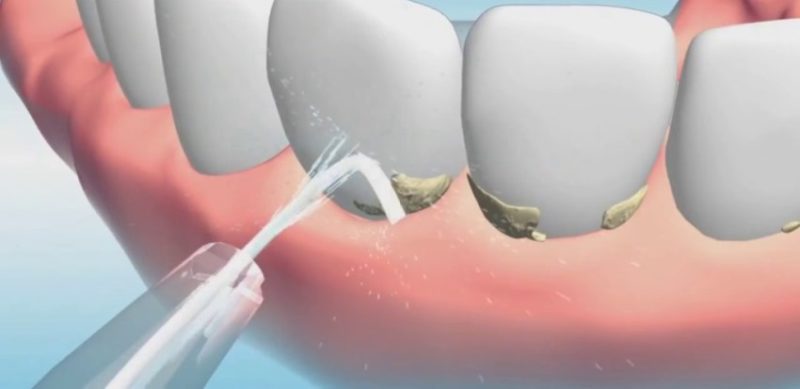
What is an irrigator
Strictly speaking, the strict association “irrigator - dentistry” arose not so long ago. The process of irrigation or irrigation is better known in the agricultural sector, and the device “irrigator” is also used in other areas, for example, in jewelry.
A medical irrigator is also not always associated with the oral cavity. Patents of vaginal irrigators are known, for example, the essence of which, in general, is similar to oral ones: cleansing, rinsing, and reporting of medicinal solutions.
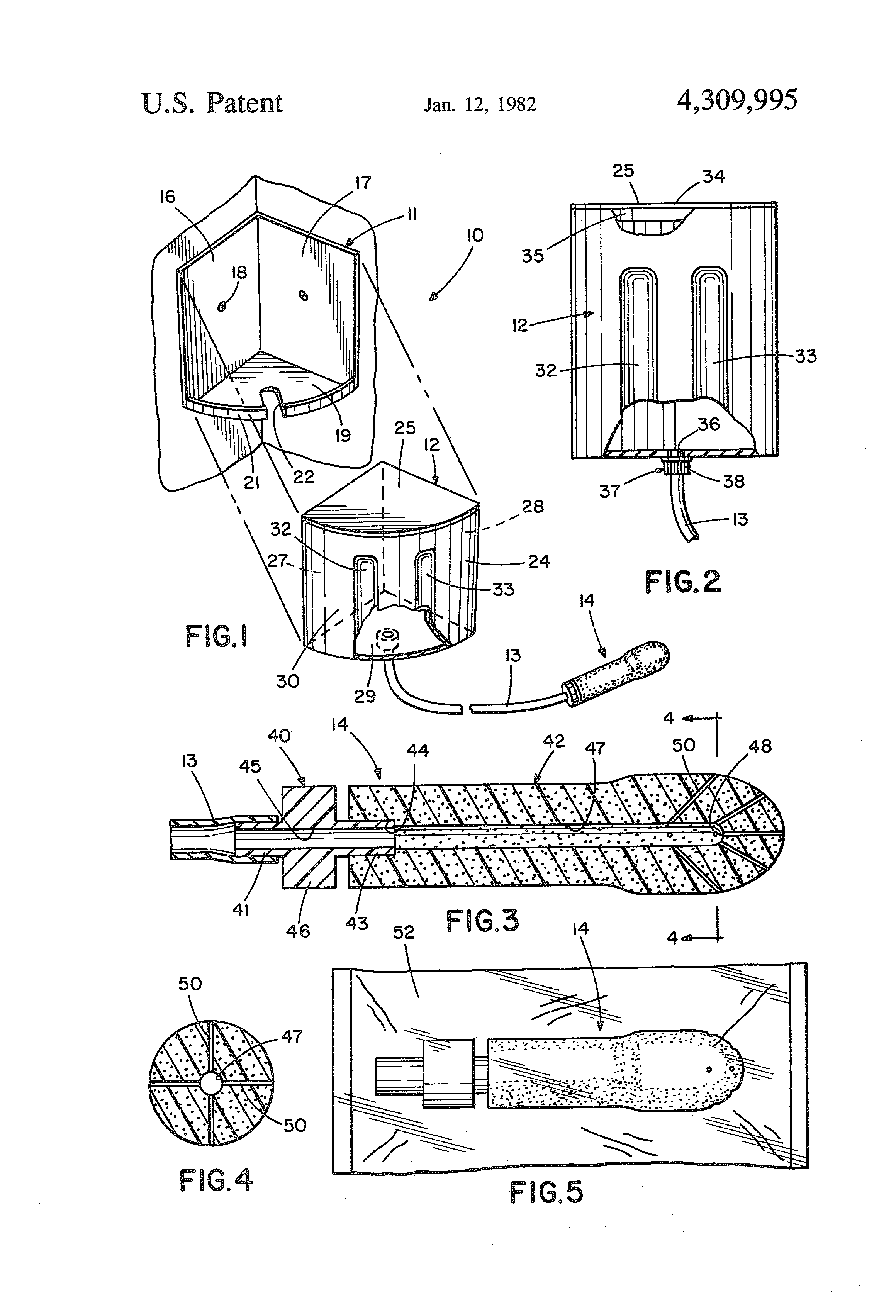
However, to this day, with the word “irrigator”, a person is more likely to associate with a dental device, the history of which goes back almost 60 years.
Various publications send us back to 1962, when two people joined forces and created the first such device, which in turn served as the basis for Aqua Tec Corp. The latter, in turn, was soon renamed to WaterPik, and today it is one of the market leaders.
The official story from the official website reads:

Here, however, a retreat can also be made. According to Google, in the same 1962 there was another patent for an oral irrigator, but under a different name .

Although the story is unlikely to be cleared up in more detail once. In any case, it is generally accepted in the scientific community that it is Moyer who is the progenitor of oral irrigation, and, perhaps, it really is.
If you fluently read an excerpt from the “Proud Story of WaterPik”, then the device of the irrigator is now very clear: the irrigator is based on a pump for powerful water supply, which cleans hard-to-reach places in the mouth, right up to the removal of literally nasty tonsillolites .
So it is uncontested?
I must admit that most materials, posts and collections today characterize the irrigator as the most “correct” way to care for the oral cavity. These devices really have a number of advantages over other means.
In particular, the irrigator:
In other words, there are a number of people for whom such a device is completely indispensable: users of prostheses, carriers of braces. There are people to whom it can be recommended, for example, to patients with weak gums. And to everyone else - as a means of prevention and effective removal of plaque and food debris between the teeth and in the pockets of the gums.
Irrigator and diabetes
Small digression
In almost every article about an irrigator, you will probably find that the irrigator is indicated for diabetics. What exactly is the value for this category is definitely difficult to answer. We believe that the authors have in mind the general weakening of immunity in this disease, from where the consequences may arise in the form of gum weakness, including, and therefore the loyalty of the irrigator - as it were proved.
There is no doubt about this logic. But some go even further and directly change the cause and effect: a healthy periodontium as one of the methods of glycemic control. True, as a result, the authors of the study write that bidirectional communication is not so obvious.
Returning to the question of the "non-alternative" of the irrigator, we note that in reality there are a lot of means for caring for the oral cavity. A rather detailed and, by the way, curious article provides a classification of some of them.
Both plaque, interdental brushes, and wooden cleaning products (such as toothpicks) are considered as plaque removers. It is curious that in the comparative tables, most of these drugs are “marked” with low efficiency, and only the irrigator shows “an improvement in all clinical indicators” and “a significant decrease in the plaque index”. Also among the reviews you can find theses about the superiority of irrigators over dental floss in the field of plaque removal and in reducing bleeding gums.
Panacea, but there is a nuance
Yes, comparisons are in favor of irrigators. Yes, they are more effective than all that mankind has invented, but their peculiarity is that they are not used in isolation from everything else.
The irrigator is not an alternative means of care, but only an addition to them. Simply put, when acquiring an irrigator, you should not throw your toothbrush out.
The basic rules of use are as follows
No matter how gentle this method is and whatever loads our gums can withstand: the already mentioned article provides information that a healthy gum can withstand “pressure up to 160 psi for 30 seconds without irreversible damage”, there is safety precaution and general recommendations. For example,
In addition, bearing in mind that the irrigator is most often an electric device, at first it is better to look after the children! And, in a good way, it is better to look at your dentist to determine which solution you will use the gadget with.
There is no need to use an irrigator every day: as a rule, in a number of different materials, it is considered optimal use 2-3 times a week. There are no particular contraindications, however, experts recommend abstaining until consultation with a doctor of patients with cardiovascular diseases. And, of course, you should not cut the stream immediately after installing the “plates” or prosthetics.
Small results
In general, with the culture of oral care, everything is not so smooth. A person for the time being does not think about the consequences, and they most often overtake.
Geek dentistry tries to solve this problem in different ways, mainly calling for laying the foundations of oral hygiene from a young age and creating smart gaming brushes . Anyway, the right children's cartoons also teach us to brush our teeth!

An irrigator, on the contrary, a device with more than half a century of history was originally developed for adults, and for those who have already encountered the first problems in the form of constant plaque, dentures and weak gums.
However, in addition to the sparing properties, they have real benefits and demonstrate effectiveness, as evidenced by clinical tests and reports in medical journals. You can’t call them another temporary hype.
In the everyday sense, the main thing that an irrigator does is:
Effectively removes plaque and food debris from the teeth with a pulsating jet under pressure:
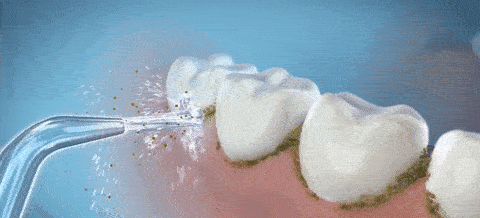
Using an irrigator, you can penetrate deeper into the pockets of the gums to remove food debris from there.
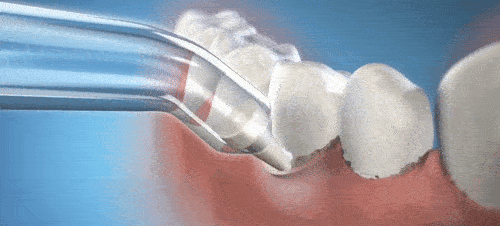
It perfectly combines with braces, treats them carefully and effectively cleans them in these inaccessible places.

The irrigator is also carefully and neatly combined with dentures.

Irrigator Models
The market is huge today. Starting in the 70s with the company WaterPik, it has grown due to major brands such as Philips, Panasonic, and also due to manufacturers of exclusively dental devices such as Revyline.
By type, consumer irrigators can be divided into two categories: “Portable”, or road. And stationary. Portable irrigators visually resemble an electric toothbrush, have a smaller reservoir and less power.
As an example - one of the models of Panasonic .

Stationary ones are more suitable for use at home: these are already “brushes with boxes”, which are much more flexible in setting cleaning modes, however, they cost a bit more. At Panasonic such model is EW1611W cost apprx. 10,000 rubles.

Revyline behaves quite successfully in the Russian market. Such irrigators turned out to be very competitive in price - the cost of stationary models is within 5,000 rubles + to this they have broad functionality, and from an aesthetic point of view - the eye is happy.

Even one of the simplest models - the RL300 boasts good stability and a normal design, a long cord, a capacity of 800 ml and ten modes of operation. Plus, in the basic configuration there are 5 interchangeable nozzles, which, in general, is in abundance for the whole family!
Well, in the end, some advertising quotes:
Logically, no one teaches anything on TV: there, 9 out of 10 dentists once again recommend improved toothpaste or, at worst, a brush that kills 99% of germs.
At the same time, competent oral care is a good investment in tooth longevity. One of the home gadgets that is designed to help with this is the irrigator. It will be discussed.

What is an irrigator
Strictly speaking, the strict association “irrigator - dentistry” arose not so long ago. The process of irrigation or irrigation is better known in the agricultural sector, and the device “irrigator” is also used in other areas, for example, in jewelry.
A medical irrigator is also not always associated with the oral cavity. Patents of vaginal irrigators are known, for example, the essence of which, in general, is similar to oral ones: cleansing, rinsing, and reporting of medicinal solutions.

However, to this day, with the word “irrigator”, a person is more likely to associate with a dental device, the history of which goes back almost 60 years.
Various publications send us back to 1962, when two people joined forces and created the first such device, which in turn served as the basis for Aqua Tec Corp. The latter, in turn, was soon renamed to WaterPik, and today it is one of the market leaders.
The official story from the official website reads:

Here, however, a retreat can also be made. According to Google, in the same 1962 there was another patent for an oral irrigator, but under a different name .

Although the story is unlikely to be cleared up in more detail once. In any case, it is generally accepted in the scientific community that it is Moyer who is the progenitor of oral irrigation, and, perhaps, it really is.
If you fluently read an excerpt from the “Proud Story of WaterPik”, then the device of the irrigator is now very clear: the irrigator is based on a pump for powerful water supply, which cleans hard-to-reach places in the mouth, right up to the removal of literally nasty tonsillolites .
So it is uncontested?
I must admit that most materials, posts and collections today characterize the irrigator as the most “correct” way to care for the oral cavity. These devices really have a number of advantages over other means.
In particular, the irrigator:
- Removes plaque on the surface of the teeth and in the interdental spaces;
- Cleans gingival pockets from plaque and food debris;
- Cleans plug-in structures and areas of teeth in contact with them;
- Comfortable with increased sensitivity of teeth and gums;
- It fights plaque in the tongue and gums;
- Used for increased bleeding gums;
- It produces a massage effect, stimulating blood circulation in the gum tissue.
In other words, there are a number of people for whom such a device is completely indispensable: users of prostheses, carriers of braces. There are people to whom it can be recommended, for example, to patients with weak gums. And to everyone else - as a means of prevention and effective removal of plaque and food debris between the teeth and in the pockets of the gums.
Irrigator and diabetes
Small digression
In almost every article about an irrigator, you will probably find that the irrigator is indicated for diabetics. What exactly is the value for this category is definitely difficult to answer. We believe that the authors have in mind the general weakening of immunity in this disease, from where the consequences may arise in the form of gum weakness, including, and therefore the loyalty of the irrigator - as it were proved.
There is no doubt about this logic. But some go even further and directly change the cause and effect: a healthy periodontium as one of the methods of glycemic control. True, as a result, the authors of the study write that bidirectional communication is not so obvious.
Returning to the question of the "non-alternative" of the irrigator, we note that in reality there are a lot of means for caring for the oral cavity. A rather detailed and, by the way, curious article provides a classification of some of them.
Both plaque, interdental brushes, and wooden cleaning products (such as toothpicks) are considered as plaque removers. It is curious that in the comparative tables, most of these drugs are “marked” with low efficiency, and only the irrigator shows “an improvement in all clinical indicators” and “a significant decrease in the plaque index”. Also among the reviews you can find theses about the superiority of irrigators over dental floss in the field of plaque removal and in reducing bleeding gums.
Panacea, but there is a nuance
Yes, comparisons are in favor of irrigators. Yes, they are more effective than all that mankind has invented, but their peculiarity is that they are not used in isolation from everything else.
The irrigator is not an alternative means of care, but only an addition to them. Simply put, when acquiring an irrigator, you should not throw your toothbrush out.
The basic rules of use are as follows
No matter how gentle this method is and whatever loads our gums can withstand: the already mentioned article provides information that a healthy gum can withstand “pressure up to 160 psi for 30 seconds without irreversible damage”, there is safety precaution and general recommendations. For example,
- Irrigation is carried out after applying the brush!
- Do not overdo it with the pressure of the jet: otherwise the remnants of plaque can be driven into the bloodstream.
- Direct the jet at right angles to the teeth
- A session of 5 minutes is enough for one jaw
- It is better to use water with a sanitized or authorized solution. Infection with water is easy to “drive” into the blood under pressure.
In addition, bearing in mind that the irrigator is most often an electric device, at first it is better to look after the children! And, in a good way, it is better to look at your dentist to determine which solution you will use the gadget with.
There is no need to use an irrigator every day: as a rule, in a number of different materials, it is considered optimal use 2-3 times a week. There are no particular contraindications, however, experts recommend abstaining until consultation with a doctor of patients with cardiovascular diseases. And, of course, you should not cut the stream immediately after installing the “plates” or prosthetics.
Small results
In general, with the culture of oral care, everything is not so smooth. A person for the time being does not think about the consequences, and they most often overtake.
Geek dentistry tries to solve this problem in different ways, mainly calling for laying the foundations of oral hygiene from a young age and creating smart gaming brushes . Anyway, the right children's cartoons also teach us to brush our teeth!

An irrigator, on the contrary, a device with more than half a century of history was originally developed for adults, and for those who have already encountered the first problems in the form of constant plaque, dentures and weak gums.
However, in addition to the sparing properties, they have real benefits and demonstrate effectiveness, as evidenced by clinical tests and reports in medical journals. You can’t call them another temporary hype.
In the everyday sense, the main thing that an irrigator does is:
Effectively removes plaque and food debris from the teeth with a pulsating jet under pressure:

Using an irrigator, you can penetrate deeper into the pockets of the gums to remove food debris from there.

It perfectly combines with braces, treats them carefully and effectively cleans them in these inaccessible places.

The irrigator is also carefully and neatly combined with dentures.

Irrigator Models
What does an average stationary irrigator look like?
For example, the younger model Revyline - briefly about the device.
An irrigator is essentially a "two-part composition." The housing is conditionally divided into a base in which the motor pump and the upper part are a bowl-capacitance.

The bowl is most often removable for convenience.
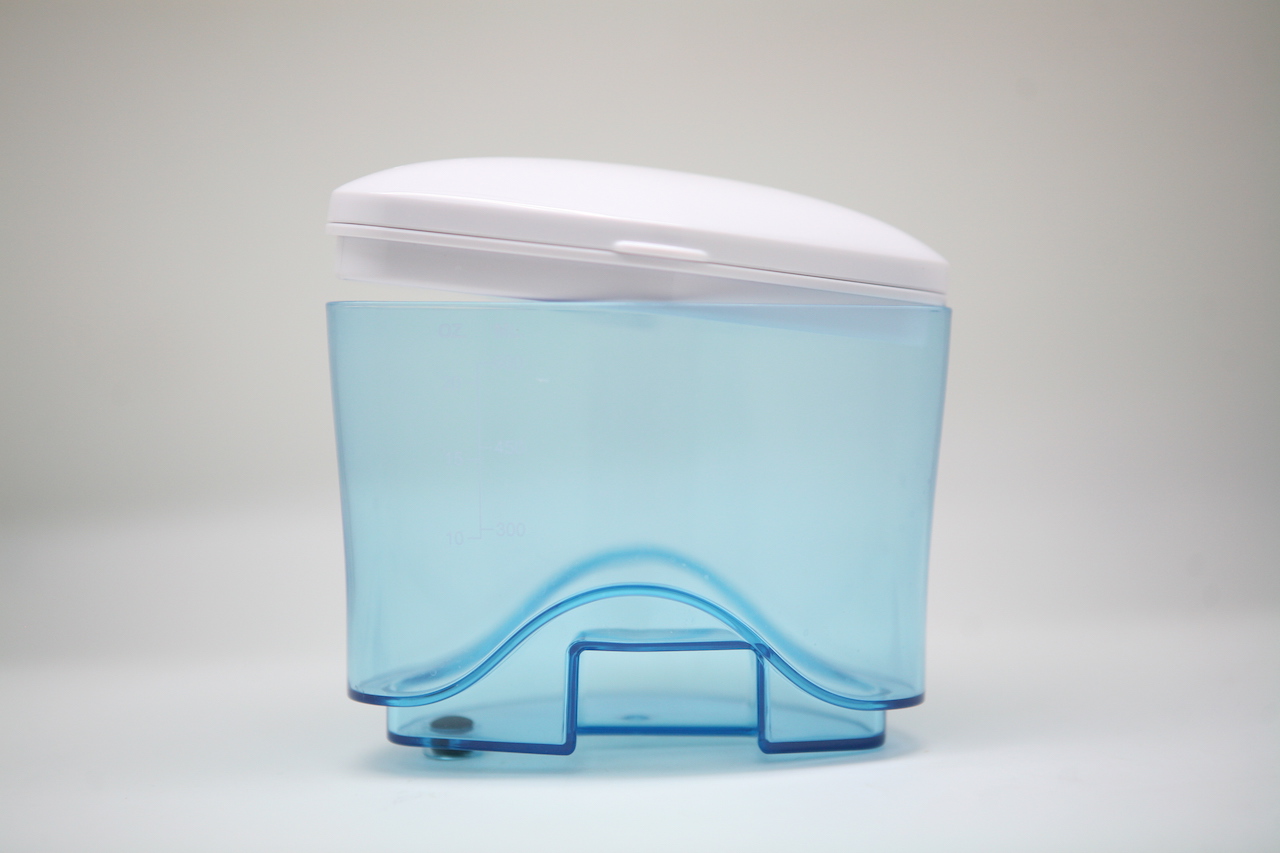
At the same time, the lid itself is often multifunctional in Revyline: for example, in this case, replaceable nozzles can be removed here.

Depending on the brand and model, their number can be impressive.
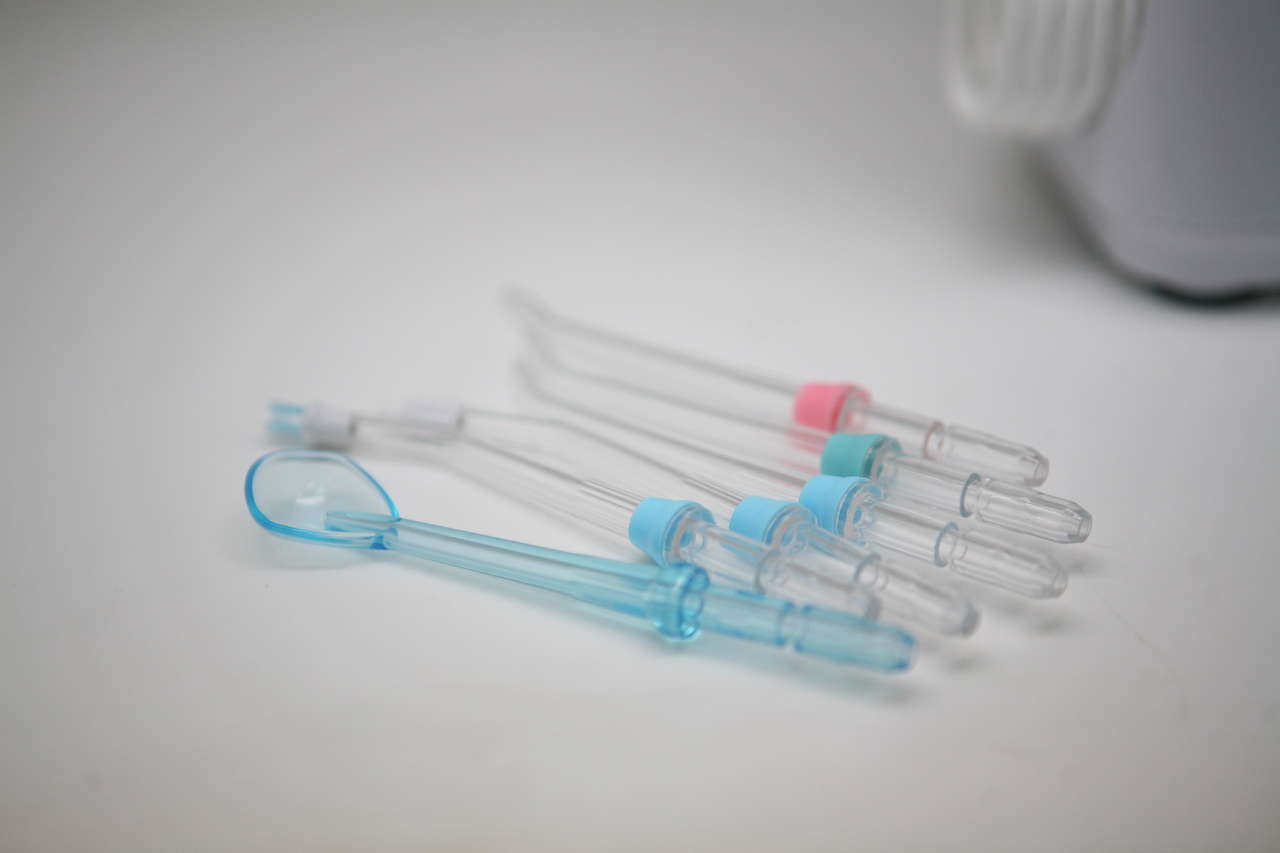
The cleaning part of the device also consists of two parts: handles and nozzles.
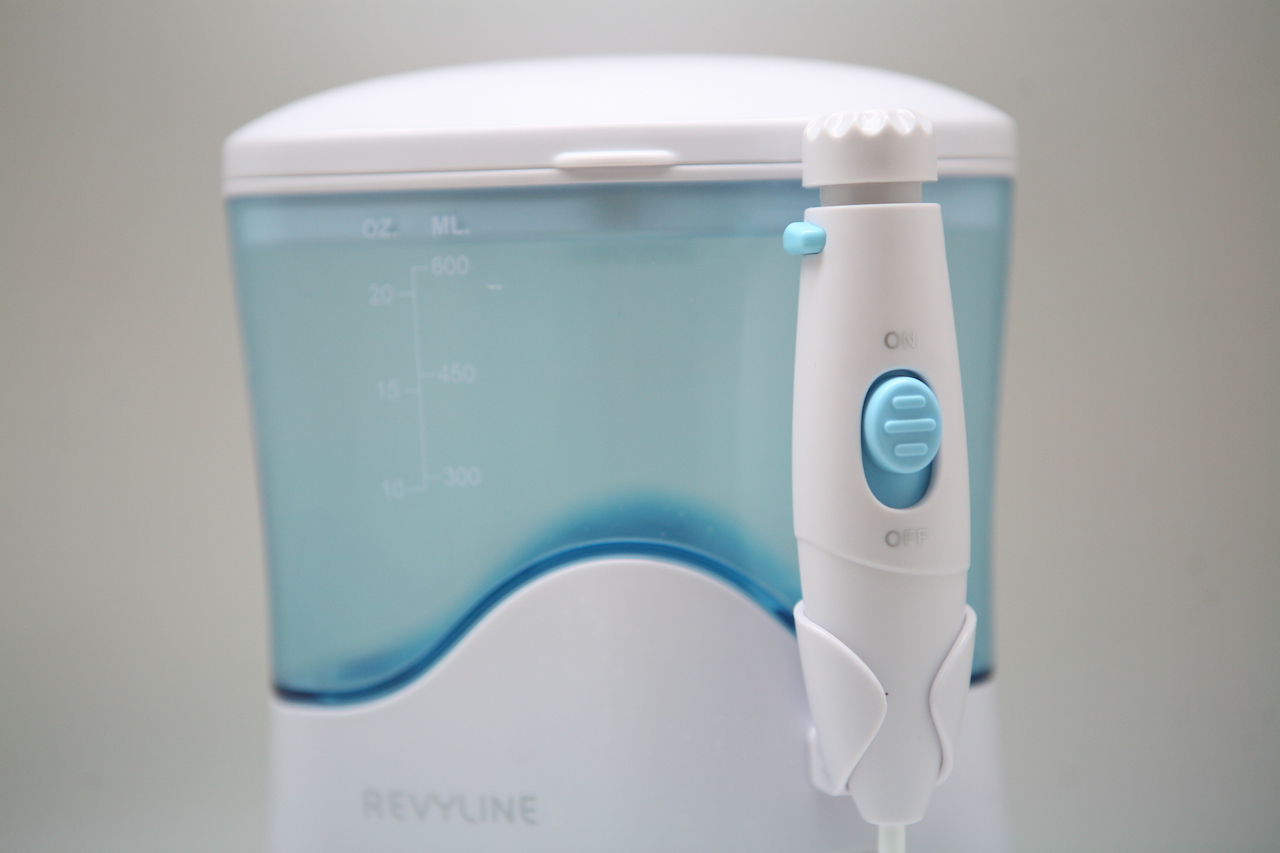
Nozzles are easy to attach:
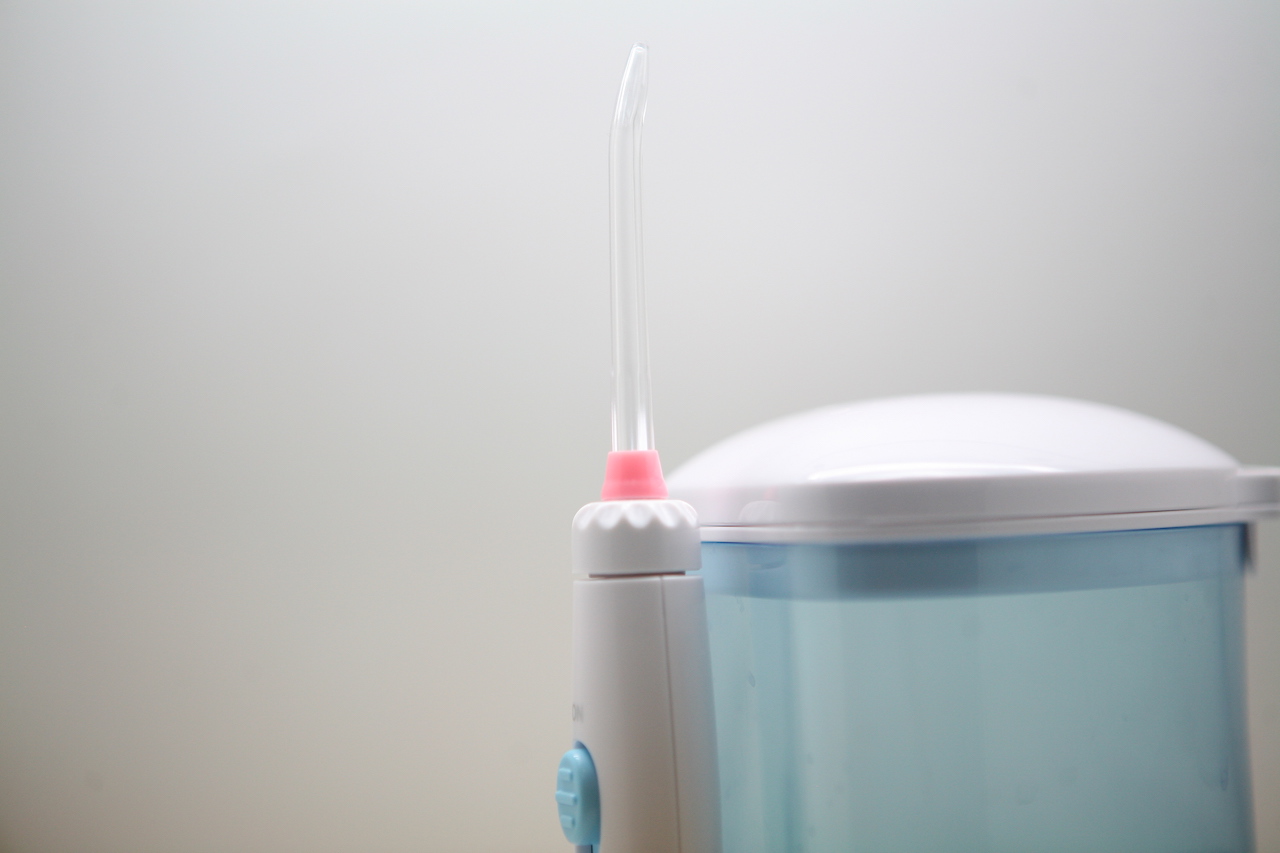
The irrigator is a pretty straightforward and monofunctional device, therefore, all other functions, whether on / off, mode control, work obviously, are activated by clear control buttons.

An irrigator is essentially a "two-part composition." The housing is conditionally divided into a base in which the motor pump and the upper part are a bowl-capacitance.

The bowl is most often removable for convenience.

At the same time, the lid itself is often multifunctional in Revyline: for example, in this case, replaceable nozzles can be removed here.

Depending on the brand and model, their number can be impressive.

The cleaning part of the device also consists of two parts: handles and nozzles.

Nozzles are easy to attach:

The irrigator is a pretty straightforward and monofunctional device, therefore, all other functions, whether on / off, mode control, work obviously, are activated by clear control buttons.

The market is huge today. Starting in the 70s with the company WaterPik, it has grown due to major brands such as Philips, Panasonic, and also due to manufacturers of exclusively dental devices such as Revyline.
By type, consumer irrigators can be divided into two categories: “Portable”, or road. And stationary. Portable irrigators visually resemble an electric toothbrush, have a smaller reservoir and less power.
As an example - one of the models of Panasonic .

Stationary ones are more suitable for use at home: these are already “brushes with boxes”, which are much more flexible in setting cleaning modes, however, they cost a bit more. At Panasonic such model is EW1611W cost apprx. 10,000 rubles.

Revyline behaves quite successfully in the Russian market. Such irrigators turned out to be very competitive in price - the cost of stationary models is within 5,000 rubles + to this they have broad functionality, and from an aesthetic point of view - the eye is happy.

Even one of the simplest models - the RL300 boasts good stability and a normal design, a long cord, a capacity of 800 ml and ten modes of operation. Plus, in the basic configuration there are 5 interchangeable nozzles, which, in general, is in abundance for the whole family!
Well, in the end, some advertising quotes:
Regular use of the irrigator reduces the likelihood of bacterial plaque formation by 24%, increases the effectiveness of brushing teeth in inaccessible areas of the oral cavity by 50%, reduces the likelihood of caries by 26%, cleanses, refreshes and improves the condition of the oral cavity. It has been clinically proven that the irrigator is 93% more effective than dental floss.And, of course, if you realized that your teeth and gums need an irrigator, then on the model of irrigators from the article (Revyline and Panasonic) until the end of the week we have a 15% discount: HABRTOOTH .
All Articles